Botox Injections: Treatment, Recovery & Side Effects
Botox injections have become increasingly popular as a method of reducing wrinkles and fine lines, offering a non-surgical alternative to more invasive procedures. However, as with all treatments, its essential to understand what Botox is, how it works, its components, and the potential side effects.
This article will provide comprehensive insight into the world of Botox. Botox injections, a trend that's been steadily gaining traction over the years, have emerged as a go-to solution for those looking to combat the signs of aging, particularly wrinkles and fine lines. These injections have quickly taken center stage in the realm of cosmetic treatments, offering a non-surgical, minimally invasive alternative to more aggressive procedures. They've become a beacon of hope for those seeking to maintain a youthful appearance without going under the knife. However, like any treatment, diving into the world of Botox should not be done lightly.

It's critical to gain a comprehensive understanding of what Botox entails before taking the plunge. This encompasses a grasp of what Botox is at its core, an exploration of its working mechanism, an analysis of its key components, as well as an awareness of the potential side effects it may harbor.
A well-informed decision is always the safest and most effective one. This article, therefore, aims to serve as a comprehensive guide, shining a light on the intricacies of Botox treatments. Not only will it provide a detailed overview of what Botox is and how it works, but it will also delve into its components, potential side effects, and other crucial aspects that you should be aware of. Consider this your one-stop resource for everything you need to know about Botox, arming you with the knowledge you need to make an informed decision about whether this popular cosmetic treatment is the right choice for you.
What is Botox?
Botox is a drug made from a toxin produced by the bacterium Clostridium botulinum. Its used in small doses to treat a variety of health problems, including severe sweating, overactive bladder, lazy eye, and of course, wrinkles.
Botox, a fascinating medical marvel, is derived from a toxin produced by the bacterium Clostridium botulinum. It's an intriguing paradox that a substance known to cause food poisoning in its natural state has been harnessed into a beneficial drug that's revolutionizing the medical and cosmetic industry. When administered in minimal, controlled doses, it's been proven to have multiple therapeutic applications, making it an invaluable tool in the hands of medical professionals worldwide. Among the health problems it addresses, severe sweating, known medically as hyperhidrosis, is one. Individuals who have tried conventional treatments to no avail find solace in Botox, which works by blocking the nerves responsible for activating your sweat glands. Another area where Botox has proven beneficial is in treating an overactive bladder. It helps relax the bladder, thereby reducing episodes of urinary incontinence.
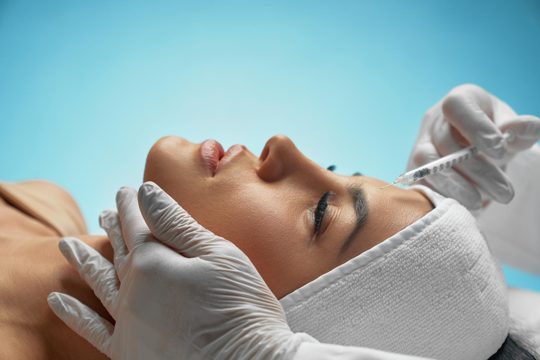
Eye disorders such as lazy eye, or strabismus, have also seen significant improvement with Botox treatment. By altering the balance of muscles in the eye, it aids in alignment, greatly improving the patient's quality of life.
And of course, one cannot overlook Botox's most famous use - as a wrinkle reducer. By temporarily paralyzing the muscles that cause wrinkles, it's become an integral part of many people's beauty regimens, giving them the youthful appearance they desire. In conclusion, Botox is a prime example of medical ingenuity, turning a harmful toxin into a versatile treatment that's improving lives daily. Whether it's severe sweating, an overactive bladder, a lazy eye, or wrinkles, Botox is proving to be an effective solution, helping people regain control of their bodies and boost their self-esteem. It's safe to say that Botox, in its small doses, is making big waves.
How does Botox work?
Botox works by blocking nerve signals in the muscles where it is injected. When those nerve signals are interrupted, the affected muscle is temporarily paralyzed or frozen.
Without the ability to move, wrinkles in the skin above the muscle relax and soften. In the fascinating world of cosmetic treatments, Botox plays a pivotal role in rejuvenating the skin by effectively blocking nerve signals in the muscles where it is meticulously injected. This unique procedure works on the principle of neuromuscular obstruction. When these nerve signals are artfully interrupted, the targeted muscle enters a state of temporary paralysis or, more accurately, it becomes 'frozen'. However, this isn't as alarming as it may sound. It's a temporary condition that is carefully controlled and monitored by skilled professionals.
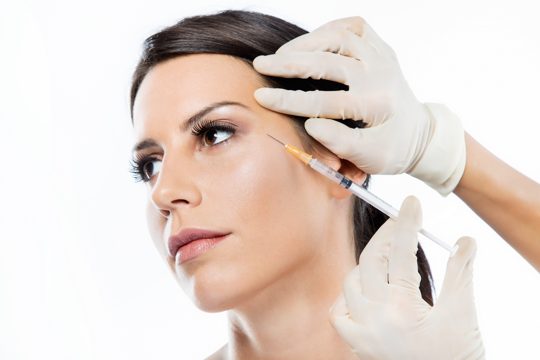
This specific muscle 'freezing' is actually a strategic move designed to halt the progression of wrinkles and fine lines that appear on the skin above the muscle. With movement restricted, the skin gets a much-needed reprieve from the constant folding and unfolding that contributes to the formation of wrinkles.
As a result, existing wrinkles in the skin above the muscle visibly relax and soften, giving the skin a smoother, more youthful appearance. This is the magic of Botox - it works beneath the surface to provide visible results that enhance your natural beauty, and that's what makes it a popular choice among those seeking a minimally invasive solution to combat the signs of aging. In conclusion, Botox’s role in cosmetic enhancement is not only intriguing but also highly effective. Its ability to temporarily immobilize muscles, thereby allowing wrinkles to relax, marks a significant advancement in aesthetic treatments.
What is Botox made of?
Botox is primarily made of the botulinum toxin type A. This toxin is produced by the bacterium Clostridium botulinum, which is found in the natural environment where it is largely inactive and non-toxic.
Indeed, Botox, known scientifically as botulinum toxin type A, is a fascinating substance with a unique origin. It is derived from the bacterium Clostridium botulinum, a microorganism that thrives in nature, particularly in soil and untreated water. Intriguingly, in its natural habitat, this bacterium is mostly dormant, posing no threat as a toxin. The transformation of this bacterium into the potent substance we know as Botox is a testament to the marvels of modern science.
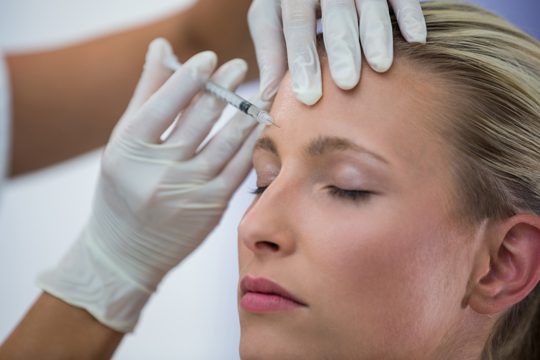
When carefully purified and used in minute, controlled doses, the toxin produced by this bacterium can be harnessed for a variety of medical and cosmetic uses. The secret lies in its ability to block nerve signals, which can be utilized to treat a range of conditions from excessive sweating to migraines, and of course, its most well-known application, reducing the appearance of wrinkles.
However, it's important to remember that while Botox has gained popularity and acceptance, it is still a medical treatment with potential risks and side effects. Therefore, it should only be used under the guidance and administration of trained medical professionals. This caution underscores the need to respect the potency of Botox - a substance that originates from an unassuming bacterium found in our environment, yet through human ingenuity, has been transformed into a powerful tool in medicine and aesthetics.
Is Botox safe?
When administered by a trained healthcare professional, Botox is generally considered safe. However, it can cause side effects including pain at the injection site, headache, flu-like symptoms, and in rare cases, drooping of the eyelid or eyebrow.
When administered by a skilled and experienced healthcare professional, Botox has been widely recognized as a generally safe procedure. This non-invasive treatment, utilized by millions of people globally, is applauded for its ability to smooth out wrinkles and fine lines, providing a more youthful appearance. However, it's important to remember that, like any medical procedure, Botox carries potential risks and side effects. One of the most common side effects is experiencing some degree of pain at the injection site. This discomfort is typically temporary and subsides as the body adjusts to the treatment. In addition to localized pain, some patients might experience headaches following the procedure. These headaches can range from mild to moderate in intensity and are usually short-lived.
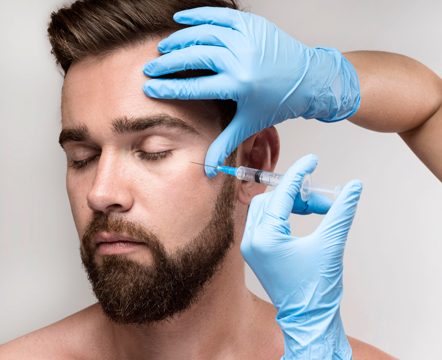
In some cases, patients might also experience flu-like symptoms following their Botox treatment. These symptoms could include general fatigue, body aches, and fever.
It's believed that these symptoms occur as the body's response to the foreign substance and usually dissipate within a few days as the body adjusts to the Botox. In rare instances, patients have reported drooping of the eyelid or eyebrow after receiving Botox injections. This side effect, known as ptosis, is temporary and generally resolves within a few weeks. It often occurs when the Botox migrates from the injection site, emphasizing the importance of choosing a well-trained and experienced healthcare professional for the procedure. Despite these possible side effects, many people continue to choose Botox for its significant benefits. It's critical to discuss any concerns with your healthcare provider before undergoing the procedure to ensure that you're making an informed decision about your health and wellness.
How should I prepare for Botox?
Before getting Botox, its essential to consult with your healthcare provider about your health history and any medications or supplements youre taking. Avoiding blood thinners, alcohol, and anti-inflammatory medications before the procedure can help minimize bruising.
Before embarking on the journey of getting Botox, it's absolutely crucial to have a comprehensive and in-depth conversation with your healthcare provider. This conversation should revolve around your health history, including any existing medical conditions, previous surgeries, allergies or any other health-related aspects that could potentially interact with the Botox procedure. Not just that, it's equally important to inform your healthcare provider about any and all medications or supplements you're currently taking. This is because certain medications or supplements can interfere with the Botox, potentially leading to complications. Be it your daily multivitamin, your prescribed medications for blood pressure or diabetes, or even the intermittent painkillers you take, every single one of them needs to be discussed with your healthcare provider before you go ahead with the procedure.
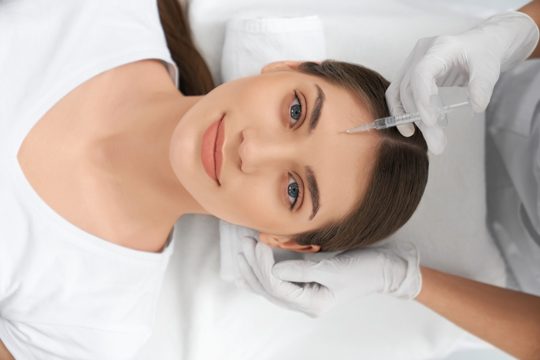
Furthermore, prudent steps like avoiding blood thinners, alcohol, and anti-inflammatory medications prior to the procedure can play a significant role in minimizing bruising post-procedure. This is because these substances can increase blood flow, leading to more bruising.
Therefore, it's highly recommended to stay clear of these substances for at least a week before your scheduled appointment. In addition, it's also advisable to avoid strenuous physical activities and exposure to sun or heat, as these can also exacerbate bruising. In conclusion, while Botox is a widely accepted and generally safe cosmetic procedure, it's imperative to take these precautions and consult with your healthcare provider to ensure a smooth and successful procedure. After all, your safety and well-being should always be the top priority!.
How often should you get Botox?
The frequency of Botox injections can vary depending on the individual and the condition being treated. However, for cosmetic purposes, most people require Botox treatments every three to six months.
Determining the frequency of Botox injections isn't a one-size-fits-all process, as it can vary greatly depending on the unique needs of each individual and the specific condition being treated. For instance, some may require more frequent sessions due to the severity of their condition, while others may need less frequent appointments due to a milder case. Hence, it is crucial to maintain open and clear communication with your healthcare provider to ensure optimal results are achieved. In the realm of cosmetic enhancements, Botox serves as a powerful tool in combating signs of aging such as wrinkles and fine lines. Most individuals seeking to improve their aesthetic appearance through Botox find that they require treatments every three to six months.
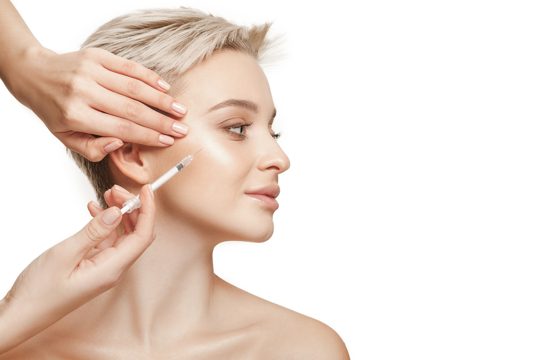
This timeframe is generally recommended to maintain the desired youthful look, as the effects of Botox begin to wear off after this period. However, it's crucial to note that this timeline can vary based on factors like age, skin type, lifestyle, and how quickly one's body metabolizes the Botox.
For instance, younger individuals with a fast metabolism may find that their Botox treatments wear off more quickly, necessitating more frequent visits. Conversely, older individuals or those with slower metabolisms may find that their results last longer. Therefore, it is essential to work closely with your healthcare provider to tailor a treatment plan that best suits your individual needs and ensures optimal results.
How long does it take for Botox to work?
Typically, you will start to see the effects of Botox within a few days of the injection. However, full results will be visible within 10 to 14 days.
After receiving a Botox treatment, you'll likely be on the edge of your seat with anticipation, eagerly waiting to see the transformation unfold. Let's demystify the process for you. Typically, the initial subtle signs of Botox's magic start to manifest themselves within just a few days of the treatment. These initial changes are subtle, almost like the gentle whispering of secrets by your skin, as it begins its journey towards a more youthful appearance. However, patience is key when it comes to Botox.
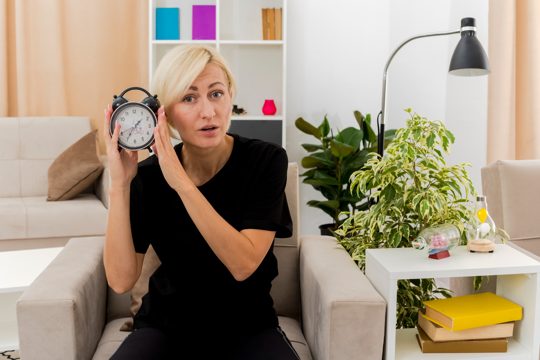
Just as a fine wine takes time to develop its full body and nuanced flavors, Botox too takes its own sweet time to showcase its complete potential. Your skin, having received the injection, is gradually adjusting to the treatment, and the full, dramatic results will only be visible within a span of 10 to 14 days post the procedure.
During this period, you'll notice a gradual smoothing of lines and softening of wrinkles, as if an artist is slowly erasing signs of age from your face, stroke by stroke. It's a fascinating process, watching your skin regain its youthful vitality and firmness. As day 14 rolls around, you'll find yourself looking into the mirror and seeing the fully-realized effects of Botox - a visage that looks well-rested, refreshed, and rejuvenated. This progression towards the final result is as exciting as it is transformative, making the wait absolutely worthwhile.
How long does Botox last?
The effects of a Botox injection can last between three and six months. After this period, the toxins wear off and muscles regain movement, causing wrinkles to reappear.
To maintain the results, regular treatments are necessary. Botox injections are a miracle of modern cosmetic science, boasting an impressive ability to smooth out wrinkles and restore a youthful glow to your skin. The potency of these injections generally lasts anywhere from three to six months, providing a temporary yet effective solution to combat the relentless march of time. During this period, the potent neurotoxins present in the Botox paralyze the underlying muscles, preventing them from contracting and thereby causing the surface skin to appear smoother and wrinkle-free. However, as all good things come to an end, the effects of Botox are not permanent. After the initial three to six month period, the toxins gradually lose their strength, and the once paralyzed muscles begin to regain movement.
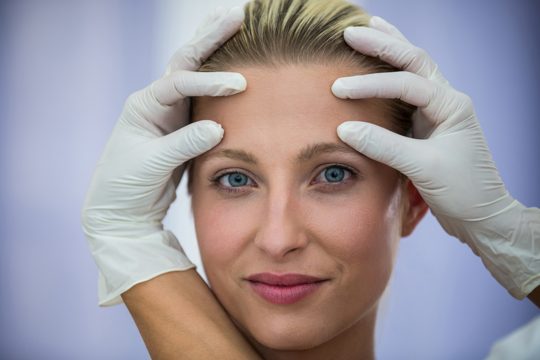
This reanimation inevitably leads to the resurgence of wrinkles, as the muscles return to their normal function of contracting and relaxing, causing the skin above to follow suit. To keep up with the desired youthful look, regular treatments are undeniably necessary.
By consistently scheduling your Botox injections, you can ensure a steadfast defense against the re-emergence of wrinkles. This routine not only maintains the achieved results but also helps to prevent the formation of deeper lines over time. The key to a successful Botox regimen lies in its timely repetition, ensuring your skin always stays one step ahead of the aging process. Thus, the journey to preserving your youthful look is a commitment, a partnership between you and your cosmetic practitioner, in the quest to keep Father Time at bay.
Recovery Post-Botox
Recovery after a Botox injection is typically straightforward. Most people can return to their normal activities immediately.
However, its advised to avoid strenuous activities, lying down, or touching the treated area for at least a few hours. Recovery after a Botox injection is typically straightforward, a straightforward process that is as seamless as the procedure itself. Most people find that they can return to their normal activities immediately, slipping back into their daily routines with relative ease. This immediate return to normalcy is one of the many reasons why Botox has gained such popularity over the years. However, it is highly recommended to exercise a degree of caution post-treatment. While you may feel perfectly fine, it's advised to avoid strenuous activities for a short while. This includes anything from heavy weightlifting at the gym to participating in high-impact sports. Even something as simple as going for a run might be worth postponing for a day.
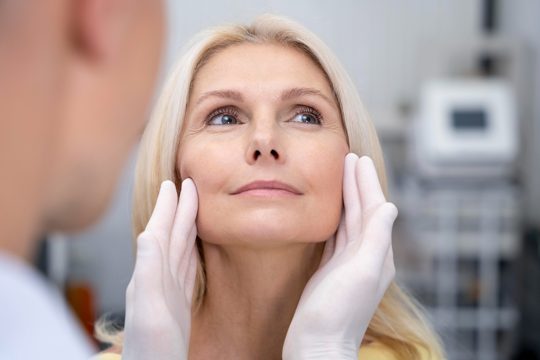
This precaution is suggested in order to prevent any unnecessary complications or side effects that might occur from overexertion. Additionally, it's also suggested to stay upright and refrain from lying down for at least a few hours following the procedure.
This allows the Botox to properly settle in the treated area and achieve the desired result. Touching or massaging the treated area is another activity to steer clear of. This is to avoid spreading the toxin to other areas unintentionally. Though these guidelines may seem overly cautious, they are in place to ensure your recovery is as smooth and complication-free as possible. In summary, while Botox recovery is generally uncomplicated, following these simple guidelines can help ensure you get the best possible results from your treatment. Remember, the key to a successful recovery is patience and care.
Side Effects of Botox
Potential side effects of Botox can include pain or swelling at the injection site, headache, fever, and drooping of the eyelid or eyebrow. In rare cases, the toxin can spread causing muscle weakness, vision problems, or difficulty breathing.
Botox, while a popular medical and cosmetic treatment, does come with potential side effects that you should be aware of. The immediate vicinity of the injection site can become a hotspot for discomfort, manifesting in pain or swelling. This is usually temporary and typically subsides after a short period. Additionally, you might experience headaches that can range from mild to severe. It's also not uncommon for some patients to develop a fever, a clear sign that the body is reacting to the treatment. Moreover, one of the more visually noticeable side effects can be the drooping of the eyelid or eyebrow. While this may initially be an alarming sight, rest assured, it's usually a temporary condition that resolves over time.

However, it's crucial to note that these side effects, while a possibility, are not guaranteed and vary greatly from person to person. Indeed, there are rare but serious cases where the Botox toxin can spread beyond the injection site.
When this happens, it can cause muscle weakness and can disturb your vision. In severe cases, it can even lead to difficulty in breathing. It's essential to remember that these instances are infrequent, but it's critical to seek immediate medical attention if you experience these symptoms post-treatment. In all, while Botox offers considerable benefits and is generally safe, it's crucial to be informed about the potential side effects. It's always recommended to discuss these implications with your healthcare provider before deciding to proceed with the treatment.
Conclusion
In conclusion, Botox is a useful tool in the fight against wrinkles and a number of other health issues. While it comes with potential side effects, it is generally considered safe when administered by trained professionals.
Always consult with a healthcare provider to determine if Botox is the right treatment for you. To wrap things up, it's evident that Botox, a powerful adversary in the battle against the stubborn signs of aging like wrinkles, is a multifaceted tool that also aids in combating a myriad of other health issues. Beyond its cosmetic popularity, it features prominently in the medical sphere to treat conditions such as chronic migraines, excessive sweating, and even certain muscle disorders. However, it's crucial to bear in mind that like any other medical procedure, Botox does come with its own set of potential side effects. These may range from mild discomfort at the injection site to more severe allergic reactions, though these are rare. As a result, it is paramount that Botox is administered by trained professionals who possess the right knowledge and skills to conduct this procedure safely.
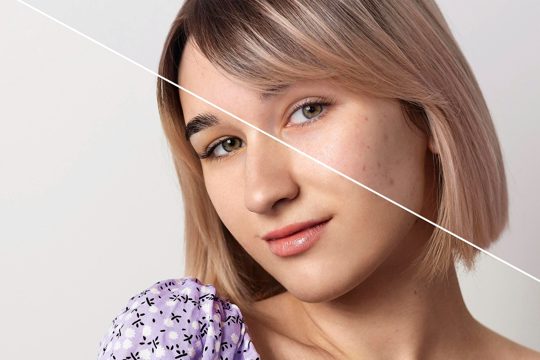
They are equipped to manage any adverse reactions that may occur, ensuring your safety throughout the process. This is why it's always advisable to have a comprehensive discussion with a healthcare provider before deciding to proceed with Botox.
They can provide a thorough assessment of your medical history, current health status, and personal goals to determine if Botox is indeed the right treatment for you. This conversation can also offer a platform for you to ask any questions you may have, alleviating any concerns and granting you peace of mind. Remember that it's your body, and you have every right to make informed decisions about what happens to it. After all, Botox is not just about enhancing one's physical appearance, but more importantly, about improving one's quality of life. So, take the time to understand, weigh the pros and cons, and then decide if Botox is the path you wish to take in your personal healthcare journey.
About us
Welcome to HealsHub! Your go-to source for all things related to health and wellness! We're here to help you lead a healthier, happier life by providing you with the latest news, research, and advice on topics like nutrition, fitness, mental health, and more. Our mission is to empower you to take control of your health and well-being through education and inspiration. Whether you're looking to lose weight, build muscle, manage stress, or simply learn more about how your body works, you'll find everything you need right here on healshub.com. We believe that everyone deserves to live a healthy, fulfilling life, and we're committed to providing you with the tools and resources you need to achieve your goals. So take a look around, explore our articles and resources, and start your journey towards better health today!

